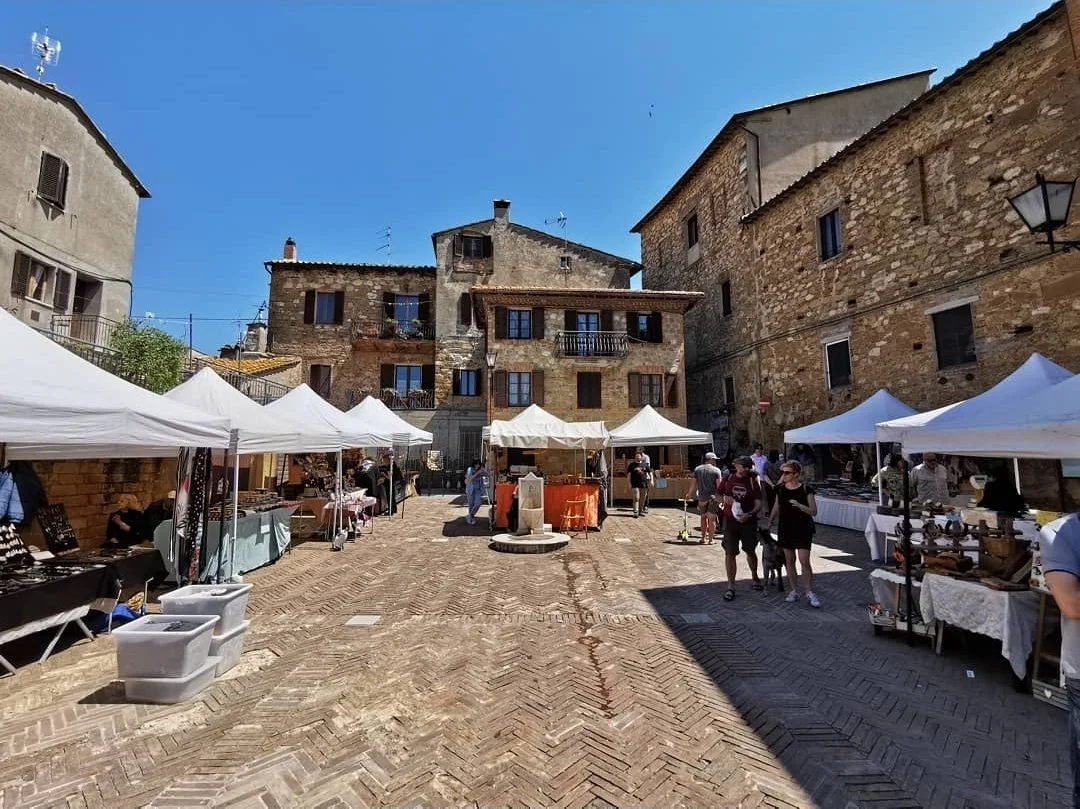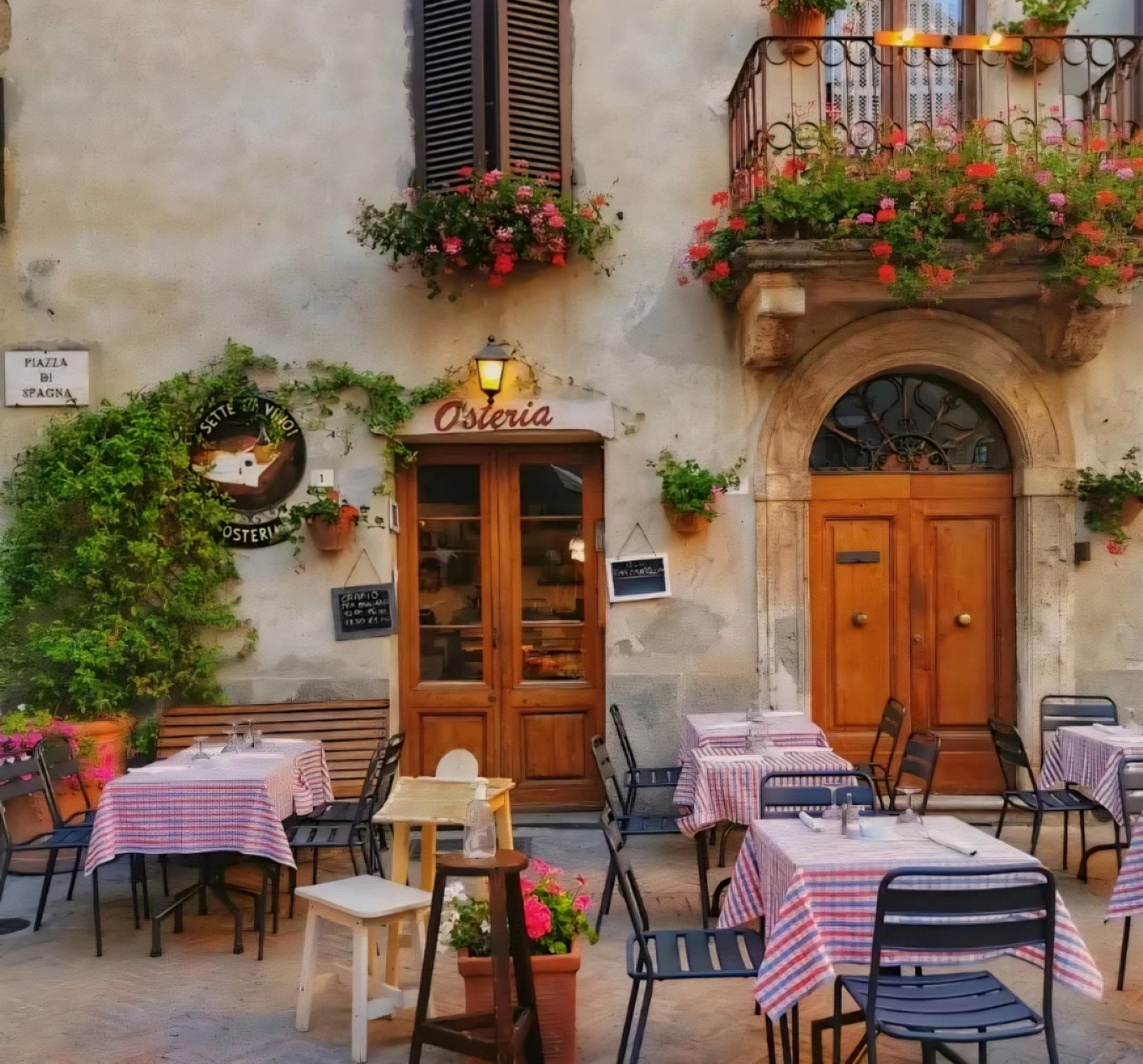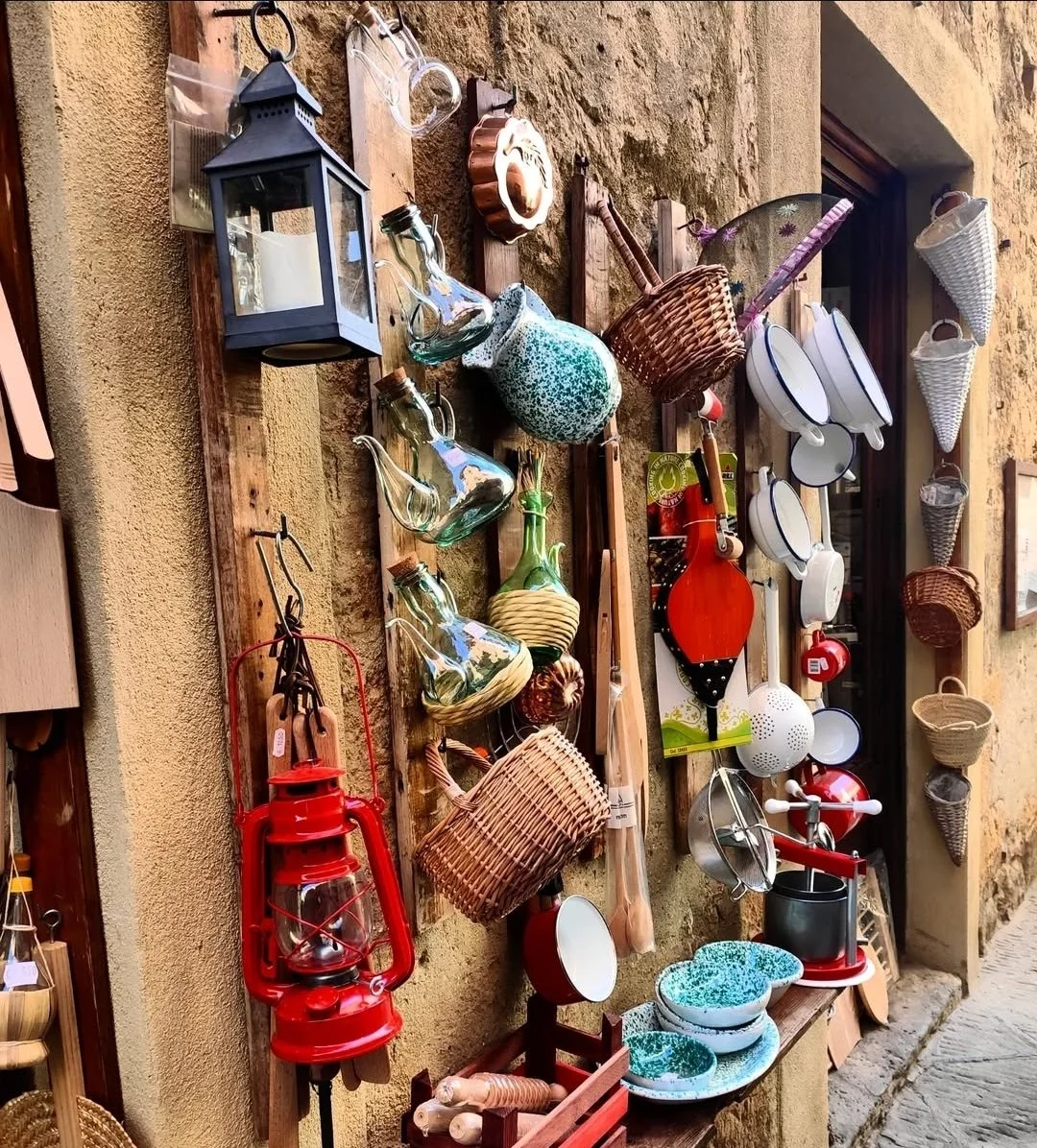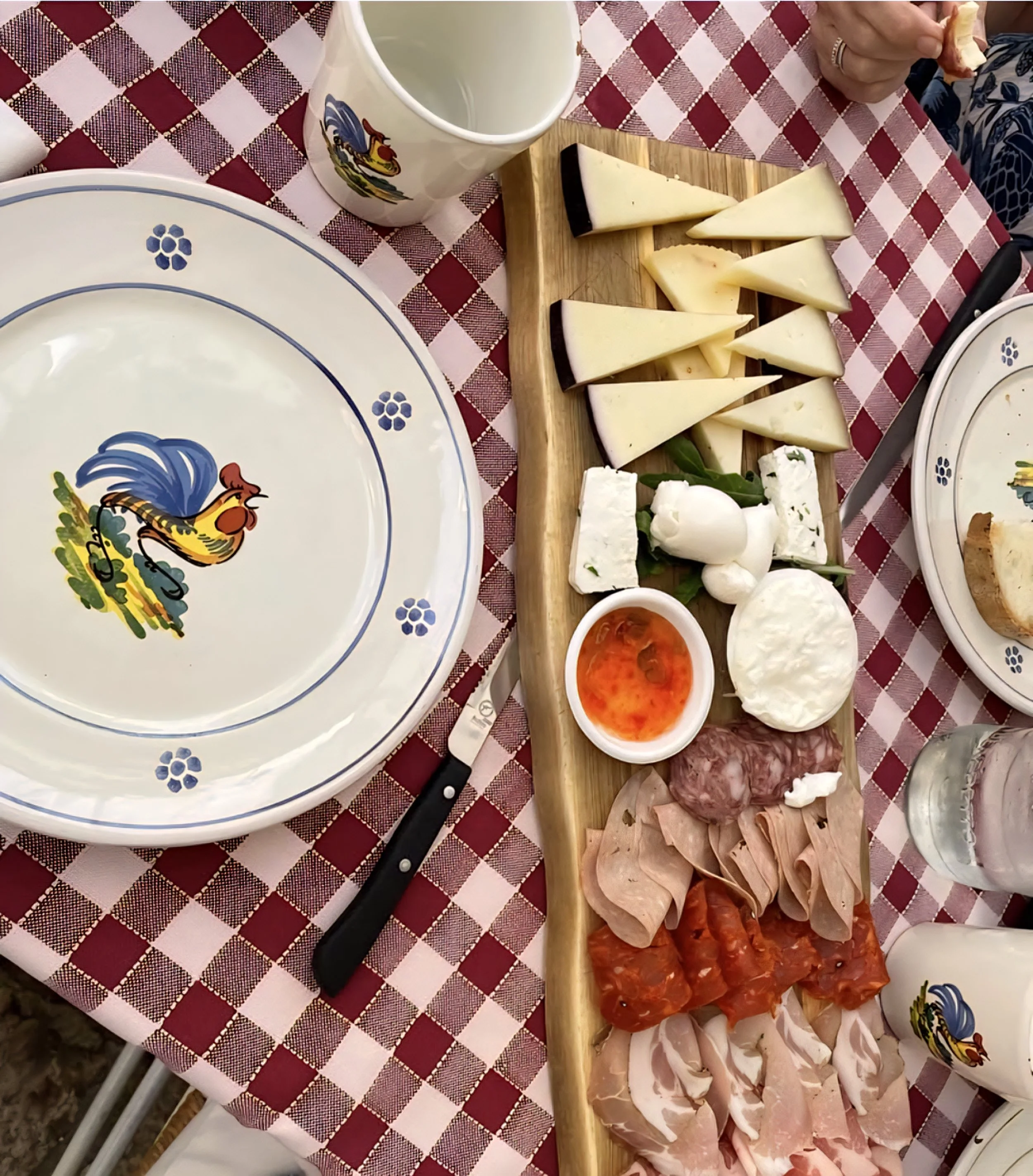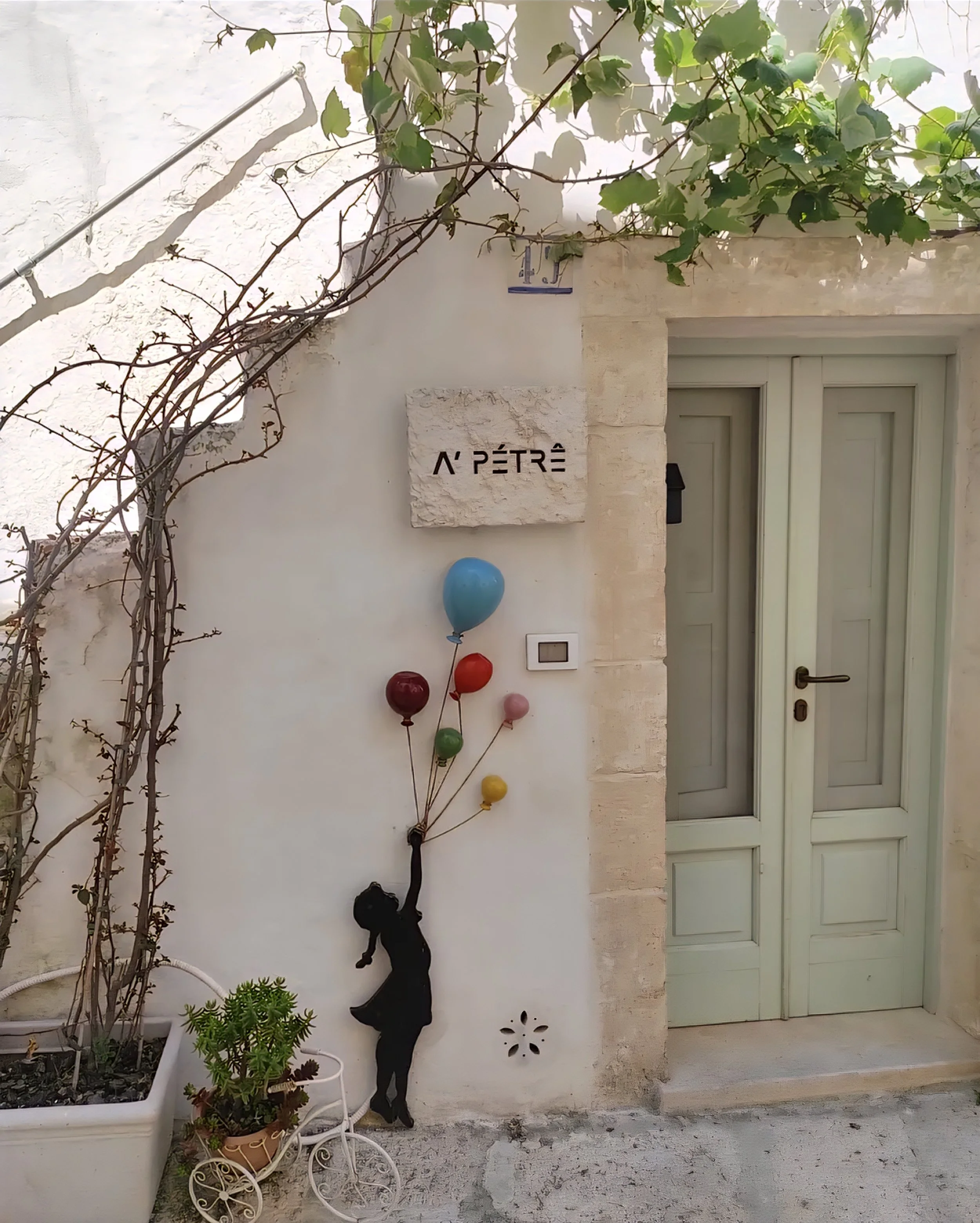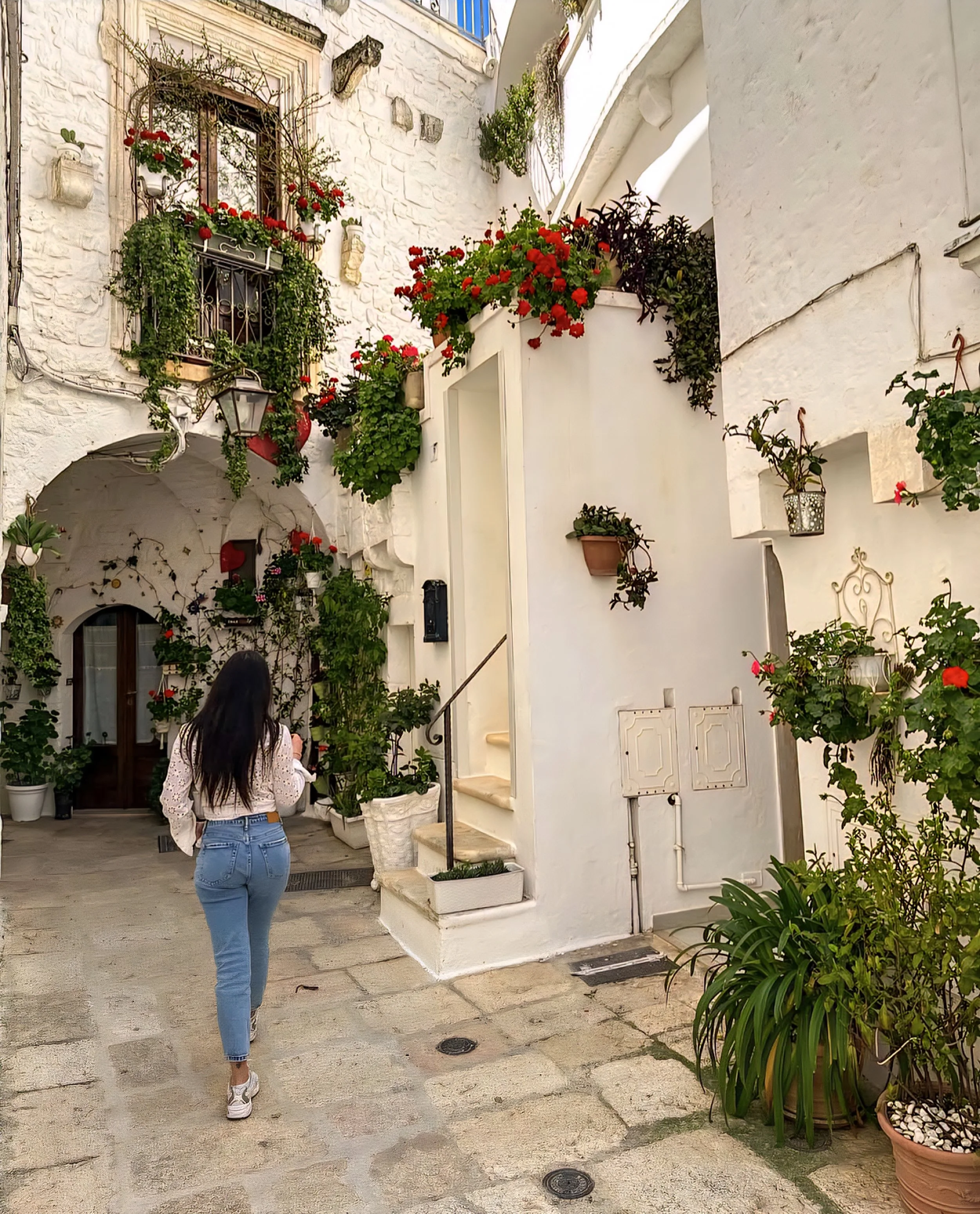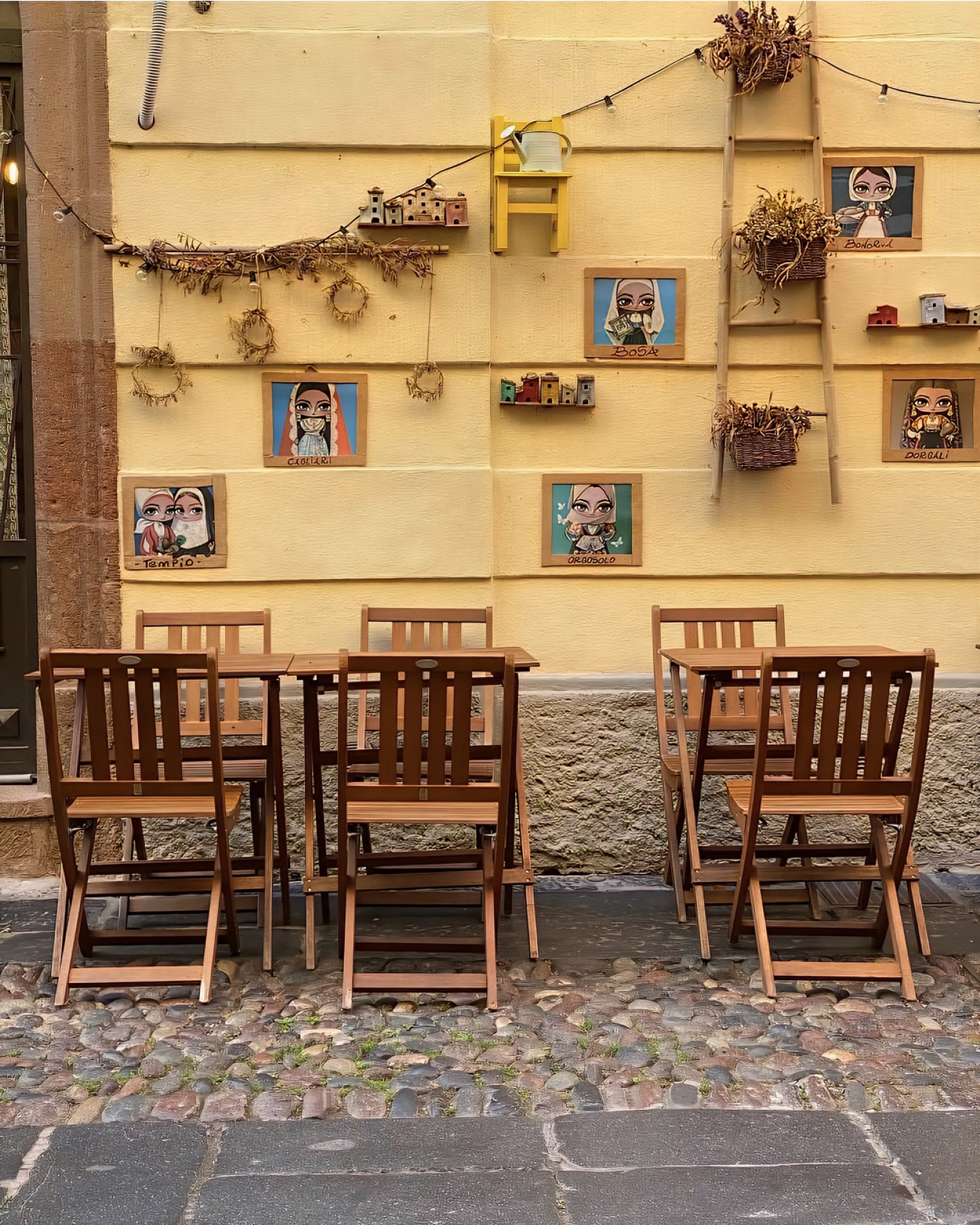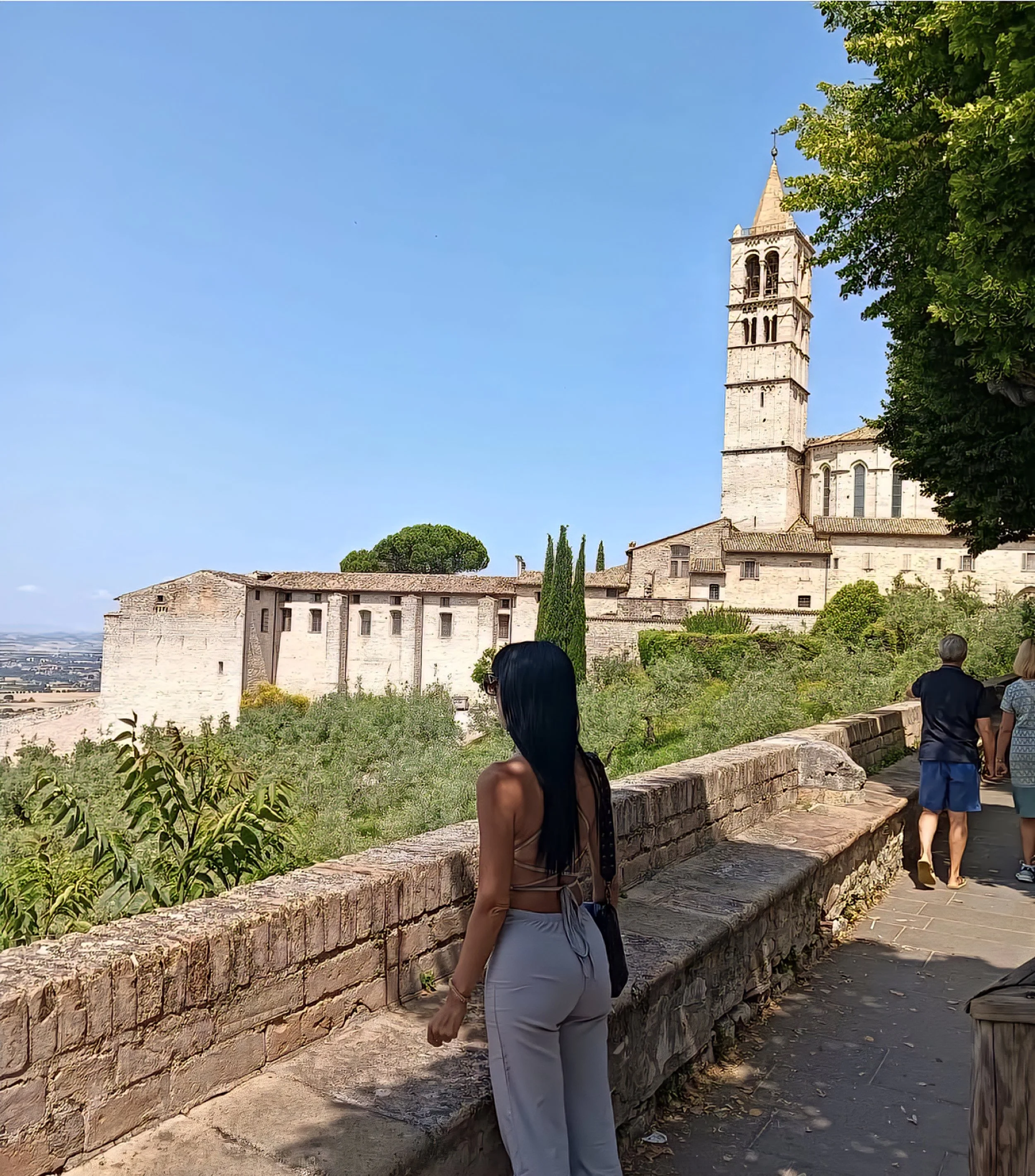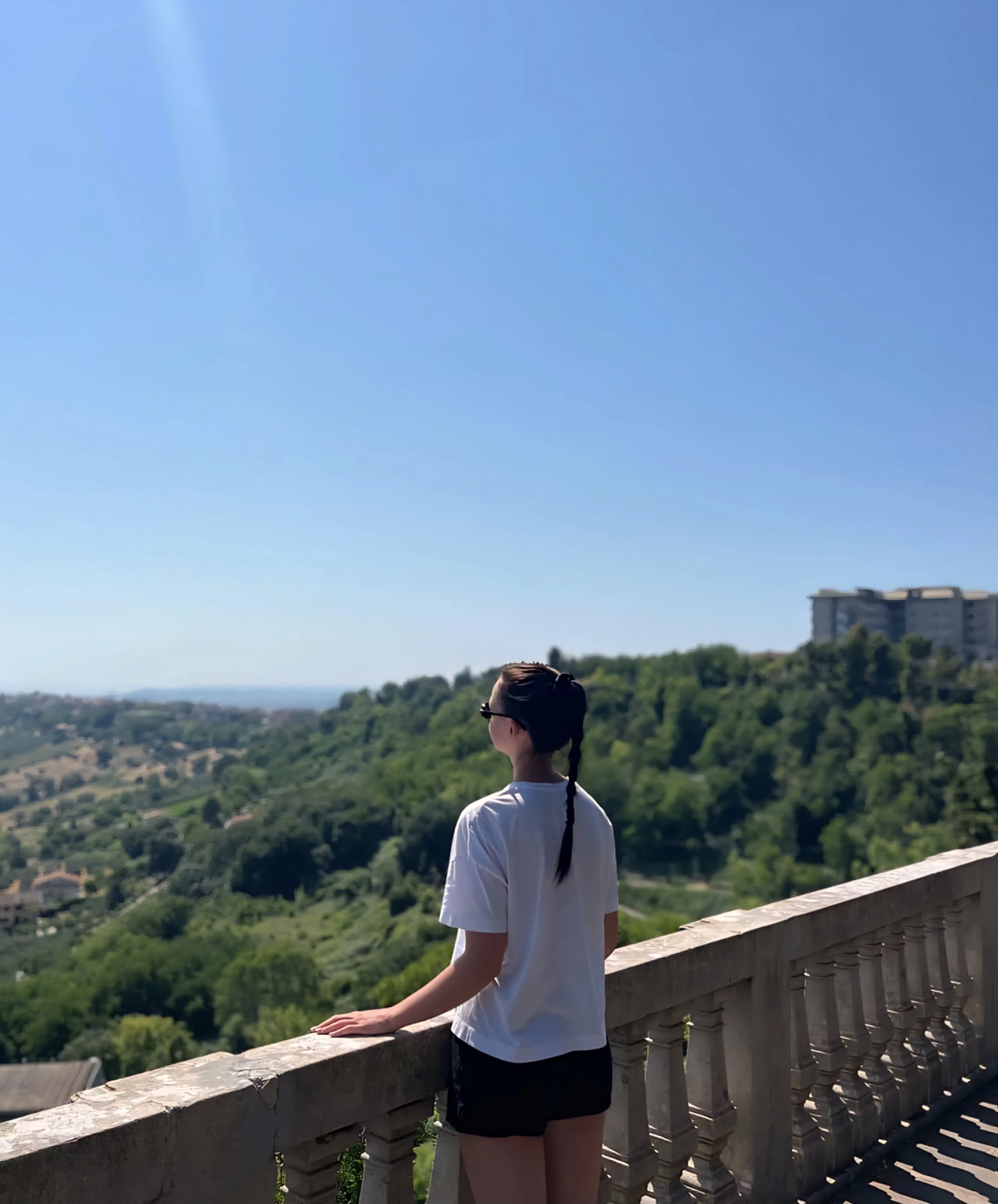Italian Market Towns That Still Feel Local (Even in Summer)
There’s a special kind of joy in stumbling upon a local Italian market on a warm summer morning - woven baskets of peaches, old men selling cheese from the back of a van, and conversations that drift through the air like music. But let’s be honest: some of the most famous markets in Italy have become more spectacle than soul. That’s why this list is different.
These are the summer market towns in Italy where the magic still feels real. No big tour buses. No €12 limoncellos. Just soft mornings, local life, and stalls you’ll want to linger at. We’ve chosen towns where the markets are still a community ritual (and where the surroundings are just as charming…)
1. Pienza (Tuscany)
Wednesday market with a view, pecorino, and peace
Pienza doesn’t scream for attention, which is exactly why it holds it. This hilltop town in Val d’Orcia feels like it was built for people who crave beauty without the fuss - stone streets washed in soft golden light, windowsills overflowing with geraniums, and a skyline that hasn’t changed in centuries. It’s small enough to feel personal, but full of layers if you stay long enough to notice.
On Wednesdays, the weekly market sets up in Piazza Dante Alighieri, and it feels more like a community ritual than a commercial event. You’ll find locals picking out zucchini flowers, wedges of aged pecorino, rounds of fresh ricotta still warm from the farm, and baskets of peaches so ripe they scent the air. There’s a stall selling handmade linens that feel like heirlooms, another with wildflower honey and herb sachets, and the kind of baker who sells out of olive schiacciata by noon.
The pace is slow. Shoppers greet each other by name, and there’s always time for a joke, a story, or a shared recommendation about where to buy the best fresh pasta. You won’t find much English spoken here, but you’ll feel included all the same.
What makes this market so special is the setting. Just steps from the stalls, you can lean on the city walls and take in one of Tuscany’s most iconic views: rolling fields, neatly lined cypress trees, vineyards tumbling into the horizon, and the faint outline of Monte Amiata in the distance. Bring a picnic bag, because you’ll want to sit and snack right then and there.
Shops in Pienza still close for lunch, so once the market winds down, take a cue from the locals: find a shaded table and order a glass of local Rosso di Montalcino. Or head to La Porta for handmade pasta with shaved truffle, served slowly and without pretension.
Stay overnight, and the magic deepens. As the day visitors drift away, the town becomes hushed and golden. You’ll smell dinner cooking through open windows, hear footsteps on cobblestones, and maybe even catch a local festa unfolding in the square - complete with candles, live music, and a crowd of neighbors sharing wine under the stars.
Want a little tip?
A few of the small family-run dairies outside town welcome visitors, even if they don’t have websites. Ask at the local enoteca or café for directions to one where you can taste different styles of pecorino, often made from raw sheep’s milk and aged in walnut leaves or ash. Some will even pair it with vin santo for a quietly unforgettable afternoon.
Planning a peaceful French escape?
We’ve put together a full 3-day itinerary for Uzès - one of the most charming market towns in southern France. It’s packed with cozy cafés, scenic walks, market-day tips, and relaxed local spots you’ll love.
2. Cisternino (Puglia)
Sunday market with fire-grilled meats and local flair
Cisternino doesn’t try to charm you. It just does. Set high on a plateau in Puglia’s Itria Valley, this whitewashed town keeps its edges rustic and its rhythms local. On Sunday mornings, the market spills into the town’s older streets with the kind of sensory energy you can't fake. There’s the smell of grilled meat rising from butcher-run stalls, the thud of crates being unpacked, the sound of dialect rising and falling like waves.
The standout here is the bombette - small pork rolls, sometimes stuffed with cheese or herbs, grilled right in front of you. But this isn’t fast food. It’s decades of tradition condensed into something handheld and unforgettable. You might also find dried oregano tied in bundles, bulk olives marinated with orange peel and garlic, fresh focaccia wrapped in brown paper, and olive oil sold from taps into repurposed glass bottles.
The best thing to do? Don’t rush. Grab a snack, sit on a step, and just watch the life around you. People chat across stalls, kids dart between tables, and tourists (when they’re here at all) blend into the background.
After the market, it’s worth getting a little lost in the old town. You’ll find narrow alleys that twist between arches and balconies, small shops selling handmade ceramics, and neighborhood bars where the espresso comes with a side of conversation. If you’re visiting in summer, grab a granita al caffè from a pasticceria and cool off under a fig tree in the town park.
Staying overnight in one of the nearby trulli (the traditional cone-roofed stone houses) makes the experience even better. Waking up to birdsong, filtered sunlight, and olive branches brushing against your window is a kind of calm you can’t really explain until you’ve felt it.
And if you're up for a mini road trip, Cisternino is perfectly placed for low-key exploration. Locorotondo and Martina Franca are just 15–20 minutes away, and both offer their own take on Puglia’s slow, sun-drenched charm. But honestly, once you find your favorite corner in Cisternino, you might not want to leave at all.
3. Bosa (Sardinia)
Saturday market by the river - and it’s as colorful as the town itself
Bosa isn’t just pretty: it feels lived in. The buildings are painted in soft sherbet shades that glow at golden hour, and the town’s position along the Temo River gives it a rhythm that’s slower and more soulful than most coastal places in Italy. On Saturdays, the weekly market wraps around the lower town with a gentle buzz of activity that doesn’t feel forced or staged.
This is the kind of market where baskets of fresh mint sit beside strings of spicy sausage. You’ll see locals filling canvas bags with island-grown tomatoes, waxy potatoes, and jars of pickled myrtle berries. There’s fresh pane carasau (Sardinia’s crisp flatbread) sold alongside soft sheep’s milk cheese and honey harvested from just up in the hills.
There’s usually a van selling handmade sandals and another offering soaps scented with local herbs like rosemary and juniper. Vendors aren’t shouting to get your attention—most are chatting with customers they’ve served for years, happy to make space for visitors who come with curiosity instead of a selfie stick.
After the market, head to a riverside café with your finds or take them up the hill for a picnic with a view. Malaspina Castle has a really nice view over town, the river, and out to the sea beyond. You can also walk along the river toward Bosa Marina, stopping at family-run wine shops or artisan studios tucked behind colorful facades.
Bosa is best enjoyed slowly. Stay a night or two and watch the light shift across the buildings, the way people greet each other on their way to the bakery, and how dinner is always a lingering, generous affair. If you're lucky, you might stumble on a small festival or live music in the piazza—often unadvertised, always unforgettable.
If you’re into crafts, look for the lacework made by local women in the historic quarter of Sa Costa. It’s intricate, handmade, and often sold directly from their homes or tiny studios.
4. Spello (Umbria)
A flower-lined market town with real local soul
Spello has a way of staying with you. Perched on the lower slopes of Monte Subasio, this Umbrian town feels like a quiet embrace - stone archways draped in vines, pots of geraniums climbing every staircase, and narrow cobbled lanes that smell faintly of lavender and time. It’s known for its floral displays (especially during the Infiorate festival in June), but on most days, it’s just a beautifully lived-in place where daily life hums along without fanfare.
Wednesdays are market day, and while it’s not huge, it’s full of feeling. The stalls cluster along Via Centrale Umbra and the adjacent squares, where locals stock up on produce, cheese, and household goods. You’ll find baskets of wild greens (cicoria, puntarelle), wheels of young pecorino, local sausages laced with fennel, and sometimes even truffles if it’s the right season. Elderly men in flat caps linger by the stalls, chatting with the vendors about everything from football to the weather, and the occasional nun shuffles by with a cloth bag full of fruit.
What makes the market here special isn’t size or selection - it’s how deeply it’s woven into the fabric of the town. There’s no performance. No one’s trying to go viral. You might walk away with handmade apricot jam, a loaf of Umbrian rye, or a fresh wedge of ricotta wrapped in paper and handed over with a smile.
After the market, stop for coffee at Bar Bonci, where regulars read the paper with a side of ciambellone, a rustic ring-shaped cake that changes flavor depending on the day. Or wander up toward Porta Venere and the Roman walls, passing glimpses of olive groves and the golden Spoleto Valley beyond.
If you’re staying overnight (and you should), book a room in one of the town’s lovingly restored stone guesthouses or agriturismi nearby. Many are family-run, with views over vineyards and olive trees, and offer breakfast spreads that feel like home, like homemade crostate, fresh ricotta, seasonal fruit from the garden.
In the evening, Spello softens. The day trippers are gone, the bells ring out softly, and the warm light turns the stone buildings honeyed. Find a table on the terrace at La Cantina or Enoteca Properzio, where dinner is unhurried and the wine comes with a story. It’s the kind of place where you start talking to the people at the next table—and end up clinking glasses by dessert.
Ps. Look for jars of cipolle di Cannara: sweet local onions preserved in vinegar or olive oil. They’re a regional specialty and pair perfectly with cheese or grilled meats. You’ll find them in deli shops around town or sometimes sold from the back of a van at the market.
Want more market inspiration?
Our France, Italy & Spain Market Guide is your shortcut to the best local markets - places that are still authentic, full of feeling, and actually worth visiting in 2025.
5. Atri (Abruzzo)
Quiet Saturdays with saffron, sheep cheese, and sea breezes
Atri doesn’t make many lists, and that’s exactly why it belongs on yours. Perched in the hills of Abruzzo with views that sweep from sunflower fields to the Adriatic, this small town has a rhythm that feels beautifully out of sync with the rest of the world. You don’t come here to chase moments - you come to slow down enough to notice them.
The Saturday market threads through the historic center, wrapping around the old cathedral and narrow lanes where neighbors catch up over tomatoes and tales. It’s not flashy, but it’s full of character. Expect to see crates of tiny, bright-red peperoncini, locally made pecorino d’Abruzzo stacked in cloth, saffron threads sold in tiny envelopes, and rustic bread with cracked golden crusts that crunch under your fingers.
One of the local favorites is canestrato: a firm, slightly tangy cheese that pairs perfectly with the honey made just outside town. You might also come across jars of wild boar ragù, dried lentils from Santo Stefano di Sessanio, or olive oil from ancient groves in the hills below. And don’t be surprised if a vendor throws in an extra peach “just because.”
The charm here is in the little things: kids riding bikes between market stalls, an old man tuning his radio beside a vegetable crate, the clink of coffee cups from the corner bar. After the market, grab an espresso and cornetto alla crema at Caffè Centrale, then wander up toward the cathedral’s panoramic terrace where you can spot the Gran Sasso mountains to one side and the shimmering coastline to the other.
Stay in town, and you’ll find agriturismos where the owners still make their own wine, and trattorias where the pasta is kneaded by hand that morning. In summer, the evenings come with warm breezes and the occasional festival - concerts in cloisters, folk dancing in the square, and families out walking well into the night.
Want something special? Atri is known for its licorice, one of Italy’s best kept secrets. Look for black lozenges sold in paper wrappers from old-school shops or market stalls. The taste is intense, herbal, and unlike anything you’ll find at a supermarket.
📬 Want more peaceful travel like this?
Join our newsletter for seasonal guides, cozy travel finds, and the best market towns in Europe - without the crowds.
Why these Italian market towns are worth a visit
Travel doesn’t have to be fast or flashy to feel meaningful. In fact, the places that stick with us the longest are often the ones that don’t ask much of us at all. A slow walk through a market, a conversation with someone who lives there, a piece of fruit you picked out yourself… those things tend to stay with you in a different way.
These towns are just doing what they’ve always done - living at a pace that makes room for real life. No performances, no rush, no pressure. And that’s exactly what makes them worth visiting.
If you’ve ever left a busy trip feeling more tired than when you left home, you’re not alone. Markets like these are a reminder that there’s another way to travel. One that’s slower, quieter, and somehow a lot more fulfilling.
If you’re anything like us, we think you’ll like these guides as well:
5 Charming Villages in Southern France You’ve (probably) Never Heard Of
Discover Cabourg: The Romantic Normandy Gem You Must Visit This Year
Slow Travel in Tuscany: 4 Tranquil Towns for Cozy Cafés and Scenic Walks

